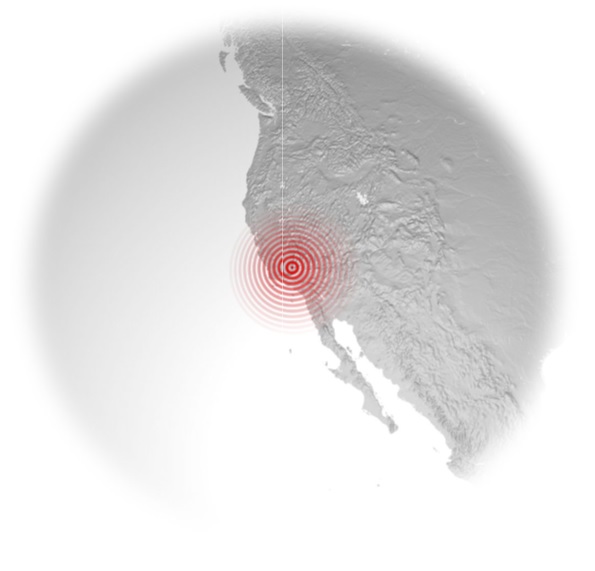Do you know how many zeros there are in a trillion?
There are 12, according to Alex Moczarski, president and chief executive officer of Guy Carpenter & Company.
Moczarski, who is also chair of Marsh & McLennan Companies International, asked and answered the question during the Guy Carpenter’s seventh annual press briefing at the Rendez-Vous de Septembre in Monte Carlo Saturday to make a point about the enormity to the disaster gap—the difference between total economic losses and insured losses associated with disasters—and the opportunity for global reinsurers to step in to provide solutions.
He said that since 1970, 70 percent of the total economic losses related to disaster around the world have not been insured. That’s a $1.7 trillion gap, Moczarski said.
“This matters because governments are under financial pressure everywhere. As they try to reduce public debt, there is clear benefit in removing these perils from [their] balance sheets and reinsurance industry can help.”
Moczarski offered examples ranging from catastrophe bonds in the Caribbean to a microinsurance scheme helping farmers in Mozambique to highlight the opportunities for insurers and reinsurers at a time when the focus in the reinsurance market has been on the challenges—and, in particular, on the “deflationary effect of excess capital.”
Such a focus “can lead to negative introspection or just waiting for the ‘big one’ to strike. Such passivity won’t do,” he said. “We must take the initiative. For a broker, this means constant innovation, anticipation of clients’ needs and delivering the best solutions.”
First the Bad News
During the press briefing, which is archived on video on the Guy Carpenter website, the CEO and leaders of several practice areas in the U.S, EMEA and Asia-Pacific all delivered bad news about reinsurance market conditions counterbalanced with messages about areas of opportunity.
Moczarski led off with the bad news. “Almost all lines of business and geographies have been affected directly or indirectly by the surplus capacity and the weak market,” he said. That even includes the aviation sector where abundant capacity is expected to “mute upward repricing” otherwise anticipated in the wake of this year’s tragic losses.
He also reported that:
- In their half-year results, reinsurers saw an average decrease in property-catastrophe premiums of 16 percent—explained by a combination of lower prices and voluntary cutbacks
- Sectors such as marine, workers compensation, casualty and health care, all experienced abundant capacity—meaning more favorable terms from a buyer’s perspective.
Turning to what he described as “a good achievement” for Guy Carpenter, Moczarski reported that U.S. business results from the broker are “effectively flat.” Noting that holding steady is an accomplishment against the backdrop of “heavy rate decreases, especially in the catastrophe segment,” he said that segmentation by type of company and client has been a factor in Guy Carpenter’s success in the U.S. “Guy Carpenter has been able to provide its customer differentiated service and advice,” he said, citing expanded market share in the mutual company and health care markets as examples where “imagination, targeted investments, building strong relationship” are paying off.
In addition, he said, “new business wins and penetration beyond our largest clients drove revenue higher, particularly in international operations.
Later during the conference, the flood peril was high on Moczarski’s reinsurer and reinsurance broker opportunity list. He noted that the World Economic Forum’s 2014 Global Risks report (co-sponsored by MMC) identified urban flooding as the world’s leading form of disaster, and that the United Nations is forecasting a doubling of the number of people exposed to cyclones, earthquakes and floods in large cities by 2050.
“Guy Carpenter understands flood and has market contacts…to gather the capacity to absorb some of this [flood] exposure,” he said.
Turning his attention to emerging economies, Moczarski said Guy Carpenter is involved in microinsurance efforts spurring economic development where many individuals live on incomes of just a few dollars per day. In 2011, Guy Carpenter received a grant from the International Finance Corporation (part of the World Bank) to develop weather index-based microinsurance policies for farmers in Mozambique that protect against flood.
More Challenges and Opportunities
Back on U.S. soil, David Priebe, vice chairman and head of GC Securities, began his remarks with the bad news for reinsurers in the U.S. property-catastrophe market on the pricing front. The Guy Carpenter rate on line index for U.S. property-cat, which fell 7 percent for all of 2013, has fallen 17 percent through midyear 2014, he reported.
“Prices were not the only things that changed,” he added. “The range of products offered and multiyear options continue to give [primary insurance] companies opportunities to better tailor their cover to their needs,” he said, adding that these insurers often used savings on their core purchases to round out coverage.
Yet while insurers wound up with more catastrophe limit overall, “the actual dollars paid into the market decreased as savings exceeded new spending.”
Priebe said the increased coverage “was also insufficient to mop up excess capacity,” displaying a chart that show the proportion of capacity that was not used in three renewal periods—January, February-April and May-July—for each of the last four years.
Unutilized capacity from May through July this year was 26 percent, compared to 23 percent in 2013 for the same period, he said. The chart showed that both these figures towered above the 2012 and 2011 figures for the same three-month interval—less than 15 percent for 2012, and less than 10 percent in 2011.
Still Priebe said the news was not all negative as he highlighted evidence of underwriting discipline by reinsurance underwriters and even signs of moderating price declines in the catastrophe bond market.
“Some of the most aggressive attempts at placement had to be repriced upward before completion” in the traditional market, he said.
“At least one cat bond was pulled for failing to clear price points that generated a minimum take-up rate, he added, likely referring to the Munich Re Queen Street X bond, which was withdrawn in late June.
“Despite some small encouraging signs, there still seems to be a sense of resignation that little can be done to forestall the effects of the massive hangover capacity,” Priebe said.
According to Priebe, the resignation of the market generally does not extend to Guy Carpenter, which has responded, in part, by setting up a Global Strategic Advisory Practice to help clients “take advantage of these conditions.”
In EMEA, where alternative capacity is yet to have a significant impact, Nick Frankland, CEO of EMEA operations, described “a mature, stable market” that is nonetheless “saturated” with capacity from existing players. “The key influence is the continued dominance of large professional reinsurers,” he said, noting that attractions to the Europe, Middle East and Africa regions include less susceptibility to catastrophes than the U.S. or Asia-Pacific regions.
Compounding the too-much-capacity problem, he said, EMEA clients who have tended to buy less reinsurance as they centralize the buying process internally.
Still, the challenges are not insurmountable, he suggested. “First, we find ways to use capacity creatively, often by encouraging tension between old and newer players,” he said. In particular, he said the increased retentions “provide an opportunity to craft bespoke solutions to protect against frequency exposure,” listing solutions ranging from single-line aggregate coverage to complex whole account solutions.
In addition, Frankland said that in EMEA companies, “the C-suite is actively using reinsurance solutions to optimize capital and solvency positions resulting in much interest in retrospective solutions,” including loss portfolio transfers and adverse development covers.
Turning to the Asia-Pacific, James Nash, CEO of Asia-Pacific operations, noted that while $40 billion of reinsurance capital being put to work there (as of 2013) represents 12 percent of the global reinsurance total, the movement of capital isn’t just one way.
“We are increasingly seeing capital from Asia flowing out to the global reinsurance industry, seeking diversification,” he said, adding that there are “several well-known regional reinsurers taking positions in Lloyd’s and elsewhere.”
As for capital inflows, he said a significant feature is that “the majority—by a slight margin—originates within the region.
“The growth we’ve seen over the past 12 months has come from either reentry of local markets that had retreated or withdrawn following severe cat losses in 2011 or from others seeking topline growth.”
Moczarski concluded the press briefing with examples of opportunities all around the globe for reinsurers and reinsurance brokers.
Following his example of the Mozambique microinsurance facility, he noted that Guy Carpenter is also part of a similar facility in Haiti that protects small entrepreneurs against economic devastation after severe natural catastrophes.
“Add the newer and growing array of emerging hazards such as cyber, terrorism, cyber terrorism, business interruption, interconnectivity, climate change and demographic and health trends and there is much to occupy our time, energy and capital, he said.
“Insurance is about more than profit, book valuation and dividends. It’s about risks, hazards and perils.”
“Our industry is better capitalized, better regulated and better qualified than at any time previously to taken them on,” he said.





















 Northern California Flooding This Weekend Caused by Heavy Rain, High Tides
Northern California Flooding This Weekend Caused by Heavy Rain, High Tides  Rebuilding Negotiation Talent: Why This Skill Is Missing and How to Fix It
Rebuilding Negotiation Talent: Why This Skill Is Missing and How to Fix It  Carrier Management’s 2025 Top Features (Reader’s Picks Unlocked)
Carrier Management’s 2025 Top Features (Reader’s Picks Unlocked)  Nearly Half of 100 Largest P/C Insurers Destroy Value: ACORD
Nearly Half of 100 Largest P/C Insurers Destroy Value: ACORD 











